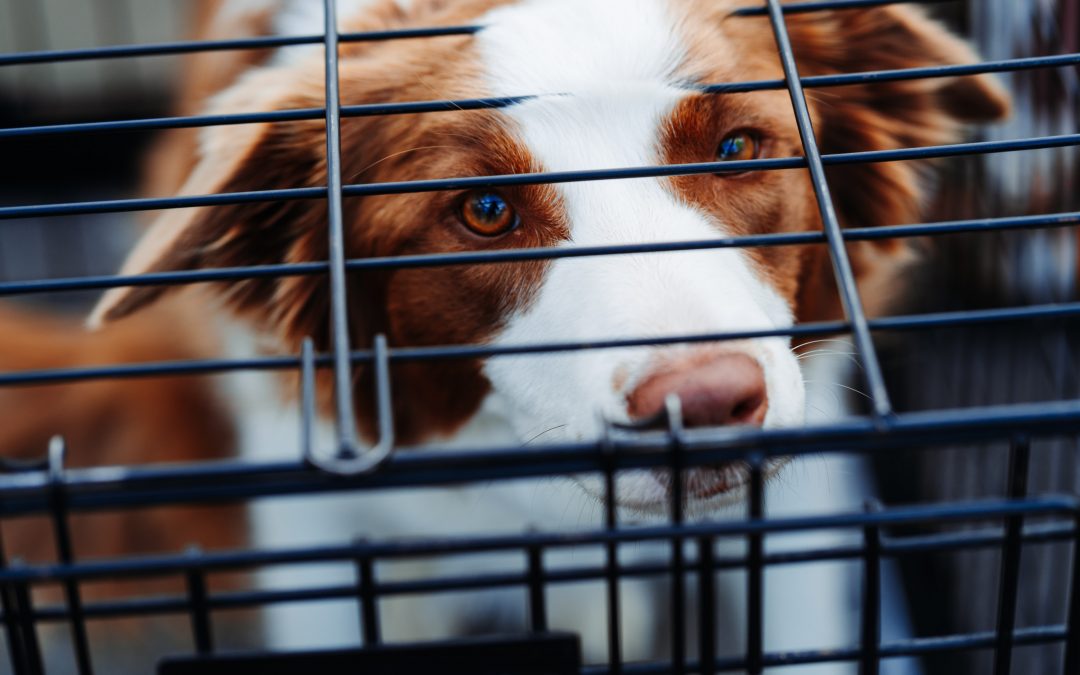The cage is a very practical educational tool, and you have to think of as a bedroom rather than a prison. It should never be used to correct your dog; they have to learn to feel comfortable and like their cage so they can see it as a safe space where they can relax.
- Avoid being destructive in the house
- Learn to be housebroken
- Reduces anxiety
- Ensures the security of your dog in your absence
- Gives your dog a place to feel secure when stressed
- Makes it easier to adapt in case of moving or traveling
How to introduce your dog to a cage:
First of all, make sure the cage is the right size for your dog: there must be enough space for your dog to be able to stand up, lie down and turn around with ease. A cage that is too big for your dog isn’t a good choice either.
- Place objects that your dog likes in their cage (toys, comfortable bed, etc.)
- Feed your dog in the cage starting with leaving the door open.
- Once your dog is perfectly relaxed to go in and eat, you can start closing the door 1-2 seconds, and sliding treats through the bars of the cage.
- Repeat the exercise giving your dog a Kong or a bone to chew on. Gradually increase the time that the door stays closed. Your dog must always feel comfortable and relaxed.
- Always reward your dog for going in their cage on their own.
- Now you can leave your dog in the cage for the night.
The earlier you introduce your dog to its cage, the easier it will be to get your dog used to it.
Useful tips:
- You can teach your dog to go in their cage on command
- Make sure to always leave things for your dog to do when alone for long periods: new toy, Kong, bones, etc.
- You can leave some music on to help keep your dog calm
- Record your dog when they’re alone to make sure yourself that your dog is not stressed
Avoid:
- Forcing your dog into the cage
- Using it as a punishment
- Opening the door when the dog barks or whines for attention
Good luck in your learning!
The Bellerive Veterinary Hospital team


